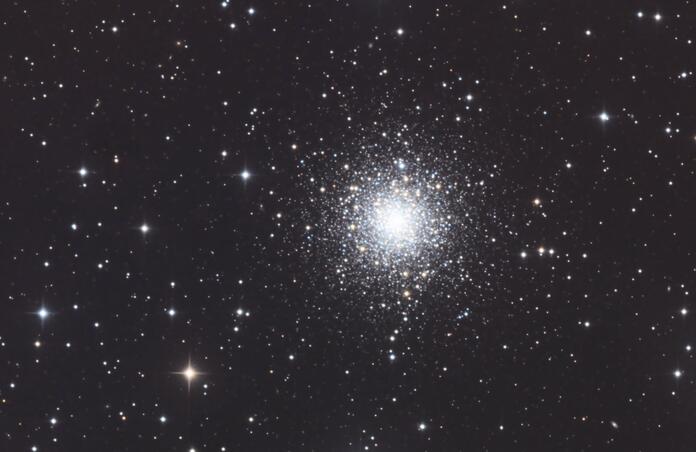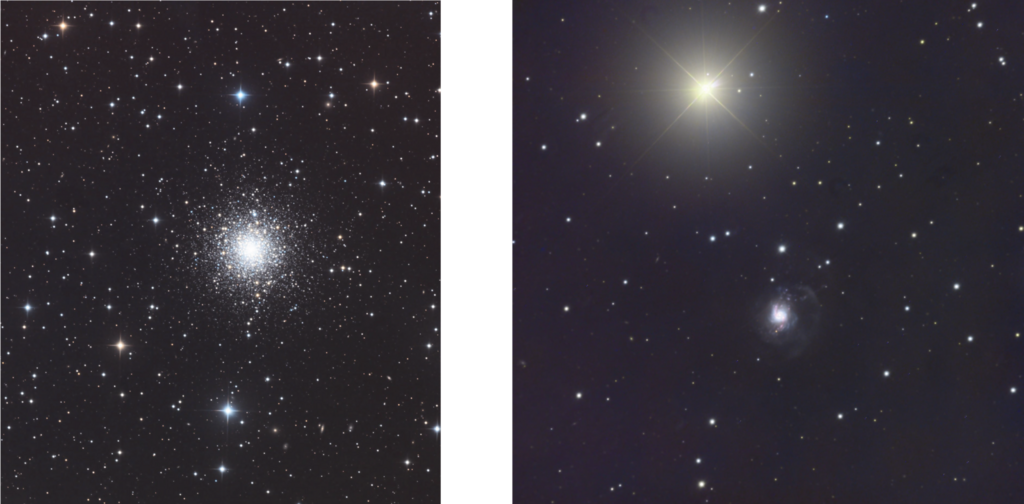On Pixel Size and Image Resolution

I regularly study my copy of The Handbook of Astronomical Image Processing by Richard Berry and James Burnell. This is a great reference work for all things related to taking and processing deep sky images, providing very detailed information and the theory on how imaging equipment works and techniques to use to get the most out of your equipment. I was studying the section on Sensors and Optics that discusses how to determine the resolution of your equipment; I learned a great deal and thought I would try to summarize and share some of it here. You can find this info in detail in section 4.1 in the book.
We all strive to get as much detail as we can out of the images we take no matter what the field of view is of our equipment. This is determined by the size of the pixel array of our image sensor (CCD or CMOS camera) and translates to the angular size of the smallest details the sensor will be able to see. The base measure for this is usually given in arc seconds per pixel. To maximize resolution, you’ll need your camera's pixel size to be small enough to pick up the smallest details that can be seen with 2 linked pixels or more. High resolution also depends on how important the field of view is to you. If you want a wide FOV, you may need to sacrifice some resolution to get the overall image you want.
To calculate the angular size of a pixel, use the following equation:
= 206265 x [Camera Pixel Size / Telescope Focal Length]
Make sure you use the same units for the pixel size and the Focal length. For example, my QHY 268C camera’s pixel size is 3.76 microns or .00376mm. My Astro Tech AT102ED has a focal length of 709mm. Do the math and the angular pixel size for this setup is 1.093 arc seconds per pixel. In other words, for the given field of view of this setup, each pixel will cover about 1 arc second of detail in the image.
What does this mean? Mount tracking errors and optical tube tremors with my imaging system can degrade the imaging to 2 arc seconds or more; it’s probably worse since I mostly image in a severely light polluted location. If the seeing isn’t very good, let’s say it’s 2 or 3 arc seconds, then things might still be somewhat Ok for imaging. However, if the seeing is very good at around 1 arc second, I’d benefit from using a longer focal length telescope assuming the FOV I’d like is still somewhat possible. For deep sky imaging, the FOV you need will usually dictate the focal length of the optical system that you need to work with.
As for getting your own copy of The Handbook of Astronomical Image Processing, you may have to search a great deal to find one. Sky and Telescope bought the old Willamen-Bell website and resources and you can still find a lot of great material there but they did not have copies of this book available. My only recommendation is to try searching used booksellers.
Stay safe, have a lot of fun if you decide to go after these targets, get your neighbors to turn off their lights at night and convince them to join in the fun….
Image Credits:
M79; Telescope Live 1-Click Bundled Data - Processed in PixInsight
NGC 3310; Telescope Live Advanced Request; LRGB using SPA-2; Processed in PixInsight
8 x 600” - Luminance
6 x 600” - Red
6 x 600” - Green
6 x 600” - Blue

This blog post was originally published in our Telescope Live Community.
The Community represents Telescope Live's virtual living room, where people exchange ideas and questions around astrophotography and astronomy.
Join the conversation now to find out more about astrophotography and to improve your observation and post-processing skills!
